Japan races to restart reactors’ cooling system
The Tokyo Electric Power Co., which runs the station 140 miles north of here, said it hoped to connect the electric cord to the cooling equipment inside the facility later today in an attempt to stabilize the reactors that were damaged by the powerful earthquake and tsunami that struck Japan eight days ago. They were planning to start with Reactor No. 2, which was seen spewing steam, perhaps containing radioactive particles, on Friday. Engineers apparently think that reactor is better suited to test whether the pumps needed to circulate cooling water will function than other reactors that are more severely damaged.
Officials cautioned that restoring electricity to the reactor would prove fruitless if the pumps were not working. In that case, a new cooling system would be needed, leading to more delays in an emergency that has bedeviled the power company and the government, and caused anxiety and frustration overseas.
Japanese government missteps in response to disasters
One week after an earthquake and tsunami spawned a nuclear crisis, the Japanese government conceded Friday it was slow to respond to the disaster and welcomed ever-growing help from the U.S. in hopes of preventing a complete meltdown at the Fukushima Dai-ichi power plant.
The entire world was on alert, watching for any evidence of dangerous spikes in radioactivity spreading from the six-reactor facility, or that damage to the Japanese economy might send ripple effects around the globe.
As day broke today, steam rose from Unit 3, an unwelcome development if not a new one that signaled continuing problems. Emergency crews faced two continuing challenges at the plant: cooling the nuclear fuel in reactors where energy is generated and cooling the adjacent pools where thousands of used nuclear fuel rods are stored in water.
Turkey sends 33-member rescue team to Japan
The Prime Ministry’s Disaster and Emergency Management Directorate said in a statement on Thursday that Turkey was sending the rescue squad at the request of Japanese authorities. The team, which also includes experts from the Turkish Atomic Energy Agency (TAEK) and the Ministry of Health, were expected to depart for Japan on Friday evening. Three vehicles, two trailers, 40 dosimeters and five sets of radiation measuring equipment are also being sent to Japan.
UR researchers search for new ways to treat radiation exposure
While experts struggle to understand the risks posed by the crippled nuclear reactors in Japan, Jacqueline P. Williams heads up research at University of Rochester on radiation exposure treatments.
Williams, who has a doctorate in radiation biology from the University of London, oversees a $36 million federally funded project at UR that is part of an initiative called the Centers for Medical Countermeasures Against Radiation. Seven American research universities are part of this network funded by the National Institutes of Health.
For almost six years, UR researchers have been involved with this project and are working with a handful of drug companies to better understand the effects of radiation on tissue and to develop drugs to treat exposure.
"If the situation deteriorates further and there really is a full meltdown and breach of all the containers, there will indeed be some long-term risks to people subjected to the fallout. That's where our research would be applicable," she said.
At least somebody's been studying this..
After the week that shook Japan, the nation starts to count the cost
Not surprisingly, the debate has already begun: can this battered nation ever rise again? Japan had, after all, been sliding for two decades before the Pacific tectonic plates shifted with such explosive force last Friday – its economy overtaken by China, its population ageing and its people saddled with the developed world's largest public debt. But this is also a nation that has a remarkable, perhaps unique, history of rebirth after destruction on a biblical scale. In 1923, a 7.9-quake and tsunami famously levelled much of Yokohama and Tokyo, killing at least 100,000 people; the anniversary of the tragedy, 1 September, is now an annual disaster prevention day. Quakes have regularly brought the city to its knees and even the national icon, Mt Fuji, looms threateningly 100km away, always ready to spew ash down on the world's largest metropolis.
Radiation Plume Hits Alaska
For the past week, Unalaska—the most populous island on the Aleutian Chain—has seen jaw-dropping sunrises. The snow-covered ridges have glowed pink and sherbet orange rather than their typical gray, and the unusually pleasant weather has been the most talked-about subject in this fishing town. But the radioactive cloud that could put an end to these sunny days? A close number two.
"What a beautiful morning," wrote resident Laresa Syverson on Facebook this Monday, just as anxiety over the nuclear crisis in Japan was settling in. "The mountains seem to be radiating." That post popped up in my newsfeed between links to a bogus map showing where the fallout from the failing Fukushima Daiichi nuclear power plant was expected. Alaska’s Aleutian Islands were squarely in the red zone.
global markets began to wobble uncontrollably. Billions upon billions of dollars were being hauled out of one market and dumped into others, only to be replaced within hours as conflicting reports and false reassurances served to unnerve already jittery traders.
When the world turned upside down
Stockmarkets took a hammering on Monday and Tuesday. They rebounded on Wednesday, but it was a half-hearted affair and they failed to recover much lost ground. By Thursday, the simmering uncertainty over the extent of Japan's potential nuclear meltdown had traders fearing the worst, and with good reason.
Yesterday, in an emergency telephone hook-up, leaders of the world's seven biggest economies frantically began efforts to cobble together a strategy that would restore some order to gyrating currency markets as the spectre of yet another financial crisis loomed.
..
Had the world's third-biggest economy been in robust financial health and the global financial system ticking over nicely, the disastrous events of the past week - even without the threat of nuclear catastrophe - would have put a serious dent in global growth, at least for the rest of this year.
The Tokyo Electric Power Co., which runs the station 140 miles north of here, said it hoped to connect the electric cord to the cooling equipment inside the facility later today in an attempt to stabilize the reactors that were damaged by the powerful earthquake and tsunami that struck Japan eight days ago. They were planning to start with Reactor No. 2, which was seen spewing steam, perhaps containing radioactive particles, on Friday. Engineers apparently think that reactor is better suited to test whether the pumps needed to circulate cooling water will function than other reactors that are more severely damaged.
Officials cautioned that restoring electricity to the reactor would prove fruitless if the pumps were not working. In that case, a new cooling system would be needed, leading to more delays in an emergency that has bedeviled the power company and the government, and caused anxiety and frustration overseas.
Japanese government missteps in response to disasters
One week after an earthquake and tsunami spawned a nuclear crisis, the Japanese government conceded Friday it was slow to respond to the disaster and welcomed ever-growing help from the U.S. in hopes of preventing a complete meltdown at the Fukushima Dai-ichi power plant.
The entire world was on alert, watching for any evidence of dangerous spikes in radioactivity spreading from the six-reactor facility, or that damage to the Japanese economy might send ripple effects around the globe.
As day broke today, steam rose from Unit 3, an unwelcome development if not a new one that signaled continuing problems. Emergency crews faced two continuing challenges at the plant: cooling the nuclear fuel in reactors where energy is generated and cooling the adjacent pools where thousands of used nuclear fuel rods are stored in water.
Turkey sends 33-member rescue team to Japan
The Prime Ministry’s Disaster and Emergency Management Directorate said in a statement on Thursday that Turkey was sending the rescue squad at the request of Japanese authorities. The team, which also includes experts from the Turkish Atomic Energy Agency (TAEK) and the Ministry of Health, were expected to depart for Japan on Friday evening. Three vehicles, two trailers, 40 dosimeters and five sets of radiation measuring equipment are also being sent to Japan.
UR researchers search for new ways to treat radiation exposure
While experts struggle to understand the risks posed by the crippled nuclear reactors in Japan, Jacqueline P. Williams heads up research at University of Rochester on radiation exposure treatments.
Williams, who has a doctorate in radiation biology from the University of London, oversees a $36 million federally funded project at UR that is part of an initiative called the Centers for Medical Countermeasures Against Radiation. Seven American research universities are part of this network funded by the National Institutes of Health.
For almost six years, UR researchers have been involved with this project and are working with a handful of drug companies to better understand the effects of radiation on tissue and to develop drugs to treat exposure.
"If the situation deteriorates further and there really is a full meltdown and breach of all the containers, there will indeed be some long-term risks to people subjected to the fallout. That's where our research would be applicable," she said.
At least somebody's been studying this..
After the week that shook Japan, the nation starts to count the cost
Not surprisingly, the debate has already begun: can this battered nation ever rise again? Japan had, after all, been sliding for two decades before the Pacific tectonic plates shifted with such explosive force last Friday – its economy overtaken by China, its population ageing and its people saddled with the developed world's largest public debt. But this is also a nation that has a remarkable, perhaps unique, history of rebirth after destruction on a biblical scale. In 1923, a 7.9-quake and tsunami famously levelled much of Yokohama and Tokyo, killing at least 100,000 people; the anniversary of the tragedy, 1 September, is now an annual disaster prevention day. Quakes have regularly brought the city to its knees and even the national icon, Mt Fuji, looms threateningly 100km away, always ready to spew ash down on the world's largest metropolis.
Radiation Plume Hits Alaska
For the past week, Unalaska—the most populous island on the Aleutian Chain—has seen jaw-dropping sunrises. The snow-covered ridges have glowed pink and sherbet orange rather than their typical gray, and the unusually pleasant weather has been the most talked-about subject in this fishing town. But the radioactive cloud that could put an end to these sunny days? A close number two.
"What a beautiful morning," wrote resident Laresa Syverson on Facebook this Monday, just as anxiety over the nuclear crisis in Japan was settling in. "The mountains seem to be radiating." That post popped up in my newsfeed between links to a bogus map showing where the fallout from the failing Fukushima Daiichi nuclear power plant was expected. Alaska’s Aleutian Islands were squarely in the red zone.
global markets began to wobble uncontrollably. Billions upon billions of dollars were being hauled out of one market and dumped into others, only to be replaced within hours as conflicting reports and false reassurances served to unnerve already jittery traders.
When the world turned upside down
Stockmarkets took a hammering on Monday and Tuesday. They rebounded on Wednesday, but it was a half-hearted affair and they failed to recover much lost ground. By Thursday, the simmering uncertainty over the extent of Japan's potential nuclear meltdown had traders fearing the worst, and with good reason.
Yesterday, in an emergency telephone hook-up, leaders of the world's seven biggest economies frantically began efforts to cobble together a strategy that would restore some order to gyrating currency markets as the spectre of yet another financial crisis loomed.
..
Had the world's third-biggest economy been in robust financial health and the global financial system ticking over nicely, the disastrous events of the past week - even without the threat of nuclear catastrophe - would have put a serious dent in global growth, at least for the rest of this year.










































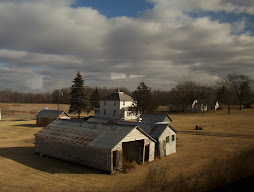











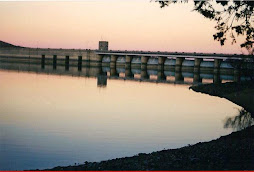






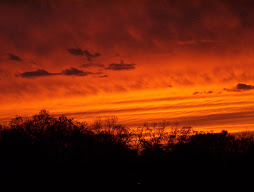
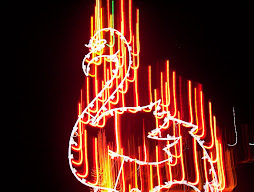


















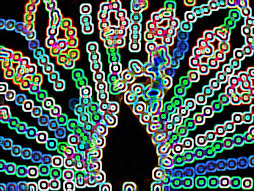









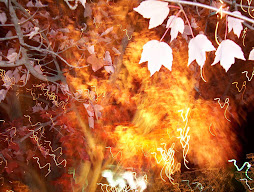









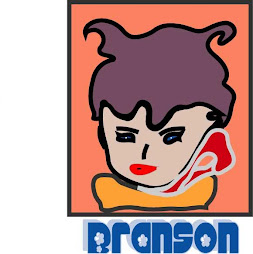



No comments:
Post a Comment